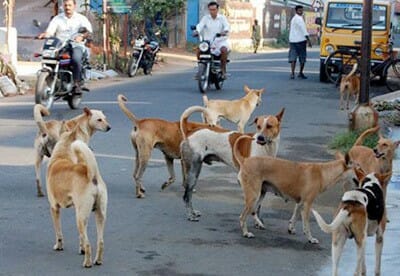“The stray dog population in India is growing by the day and we need to evolve a strategy to control rabies in India,” said the Animal Welfare Board of India (AWBI), a statutory advisory body advising the Government of India’s Ministry of Fisheries, Animal Husbandry and Dairying, in a statement on World Rabies Day, September 28 this year. They further observed an urgent need for an effective municipal licensing of pet dogs, and better management and care practices. The Board felt that the sheer magnitude and logistics of catching, neutering, and releasing a number of stray dogs is a challenge to the successful execution of the Animal Birth Control program, better known as the ABC program.
About 95,172 stray dogs were found in Mumbai, as per the 2014 dog census. Although no census has been conducted since, officials estimate the count to have reached over 2.5 lakh. “There are so many complaints of dog bites that one receives on a regular basis. Though the BMC claims that it is catching dogs for sterilisation, we rarely get to see the dog vans on the streets,” says Daksha Patel, corporator from Malad.
What is the ABC?
The Animal Birth Control programme ensures that stray dogs are neutered and vaccinated with anti-rabies shots, after which they’re left at their original territories. This practice has been the most effective in preventing rabies. Studies suggest that the program can reach its maximum impact only when at least 70% of stray dogs are sterilised.
The BMC currently oversees the programme, with the help of NGOs. At the national level, it is overseen by the Animal Welfare Board of India. The board recognises various NGOs that can undertake the program. There are also Honorary Animal Welfare Officers (HAWO) who are authorised to intervene and prevent animal cruelty.
Who manages the stray dogs?
The Brihanmumbai Municipal Corporation (BMC)’s dog licencing establishment department, better known as Dog Control Department, deals with stray dogs.
The Supreme Court in 2019 observed that the total removal of stray dogs would be wrong, and that there had to be an appropriate balance in how the stray dogs situation was handled; acknowledging the threats to human beings while allowing animals their right to live. While Daksha feels that the BMC should take stray dogs away and leave them in forests so that there are no more bites and threats to neighbourhoods, relocation of dogs is prohibited under the Animal Birth Control (Dogs) Rules, 2001, that governs the ABC program.

Which NGOs are involved in the sterilisation process?
About five NGO’s handle the sterilisation program on behalf of the dog control department of the BMC, all designated for different localities in the city. They are: In Defence of Animals (Govandi), Society of Prevention of Cruelty to Animals (Parel), Welfare of Stray Dogs (Sewri), Utkarsh Star Mitra Mandal (Mulund) and Ahimsa (Malad. The entire program is overseen by the general manager of Deonar Abattoir.
How are rabid dogs handled?
Rabid dogs are characterised by salivating glands, aggression and the tendency to bite without provocation. These dogs are caught, isolated and kept under observation, and are released after vaccination and confirmation that they are safe. If a dog dies in custody, a post-mortem is conducted to determine whether rabies was a cause, if so, humans affected by the dog are notified to take necessary medication. “However, the last case of rabies detected in Mumbai was in 2013,” says a dog control officer.
How many dogs are sterilised per annum?
“Though we have been given a target of sterilising about 36,000 dogs per annum, we have managed to reach about 50% of the target and manage to achieve about 18-20,000 strays per annum. Over and above, we sterilised 3,493 strays between September 28- October 30, 2021 as part of a special anti-rabies vaccination fortnight drive,” says Dr K A Pathan, general manager of BMC’s veterinary health department and Deonar Abattoir.
How much are NGOs paid for each sterilisation?
Currently, the BMC spends Rs 1600 for sterilization of each dog, including Rs 300 towards private contractors kept for catching the dogs. “If an organisation has been given space by us, then we give them Rs 1000. While we have our own four dog vans for bringing the strays for vaccination, private contractors are paid Rs 300/dog for catching strays,” informs Pathan.
When is the next dog census planned?
“We are in the process of upgrading our existing infrastructure and are also planning to incorporate more organisations with us for the ABC programs post the dog census planned for January 2022. The census should give us an idea about which wards or areas have higher numbers of strays,” informed Dr. Pathan.
Read more: How Mumbaikars can coexist peacefully with ferocious spotted cats
How can you notify authorities of rabid stray dogs?
Complaints can be lodged at the BMC general control room of 1916. Simultaneously, complaints can also be lodged at the city’s dog control rooms between 10.30 am to 4 pm on all working days including Saturdays.
- 23085118 (for complaints between Colaba to Mahim-Dharavi)
- 25618000 (for complaints between Mulund to Kurla)
- 26409275 (for the stretch between Mahim-Bandra to Oshiwara)
- 28808206 ( for complaints between Jogeshwari to Dahisar)
This explainer is part of a series on ‘Explainers and Information Resources for Mumbaikars’ supported by a grant from the A.T.E. Chandra Foundation.